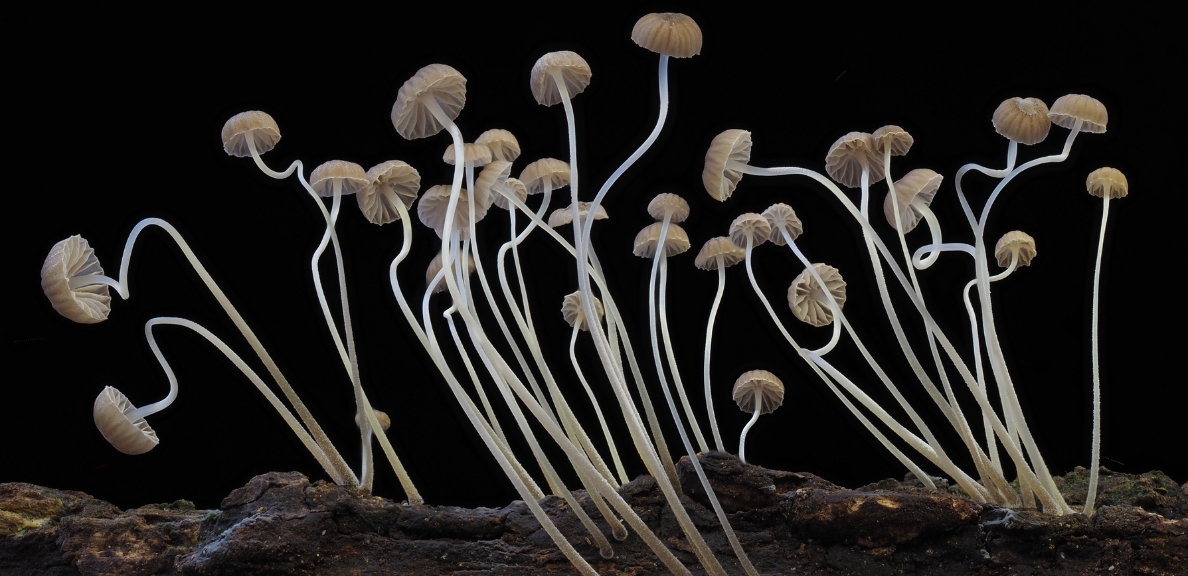
The Fungarium at Cal State East Bay
BY Sarah Harris
PHOTOGRAPHY BY Brian Perry | Image: Mycena ulmi B.A. Perry & H.W. Keller.
April 21, 2023
From the vibrant wildflowers to rushing rivers, the much-needed rain in our state has given us a lot to see and do in the great outdoors, including mushroom foraging. Head outside and take advantage of these unusual conditions!
Hordes of mushrooms normally hidden below ground have cropped up thanks to historic rain and have piqued the interest of beginner foragers and scientists alike. According to The Guardian, this “shroom boom” is a rare phenomenon and has brought mushroom enthusiasts out in droves to collect mushrooms for cooking, medicinal purposes and research.
Documenting the great fungal diversity in California provides scientific insight and knowledge for our students. “Now more than ever we are seeing individuals and amateur mycological societies/groups participate in community science projects aimed at documenting fungal diversity, biogeography, phenology, ecology, etc. These projects are making valuable contributions to our understanding of fungal biodiversity and biology,” said Brian Perry, professor in the Department of Biological Sciences.
Perry is also the director of the Cal State East Bay Fungarium, which houses mushroom specimens collected by Perry in Vanuatu, California and Hawaii. He teaches two mycology classes at CSUEB, California Fungi and Biology of Fungi, and his students from these courses have contributed to the collection as well.
Professional researchers and CSUEB students can learn about fungal morphology, ecology, biology and genetics from studying these collections. Perry said, “Not only do these specimens represent a physical record of an organism that is complete with data on habitat, location, photographs and time of year collected, but they also represent a bank of genetic information that is contained within their DNA. As our molecular biology technologies continue to advance, we will be able to unlock more and more genetic information from these collections.”
For the beginner forager, Perry recommends taking a fungi class or joining your local mushroom club for an organized foray. “Many local clubs have beginner's forays that are designed to teach new members about fungi and how to go about collecting them safely. If in doubt, reach out to your local fungarium director!”
Share this story